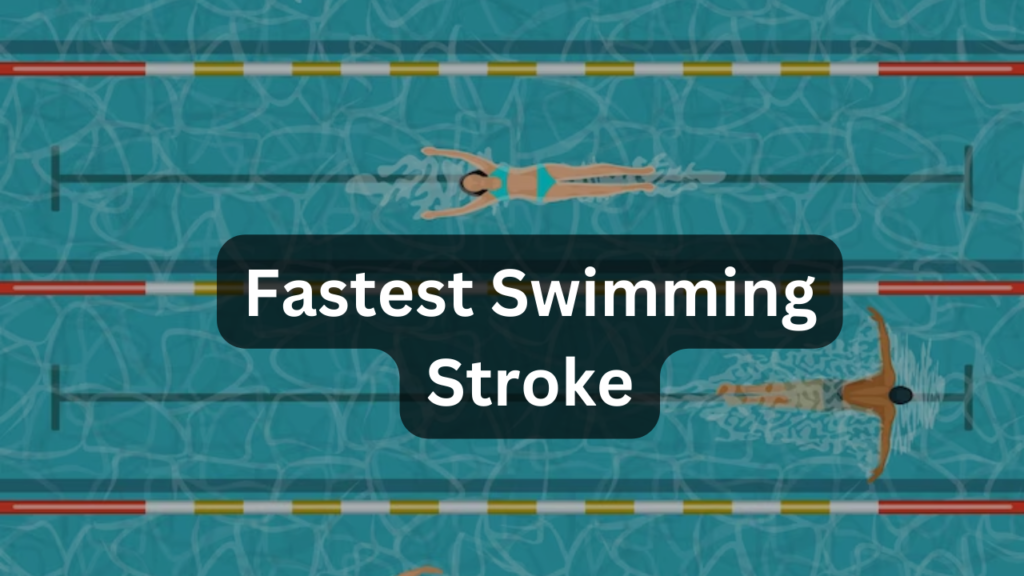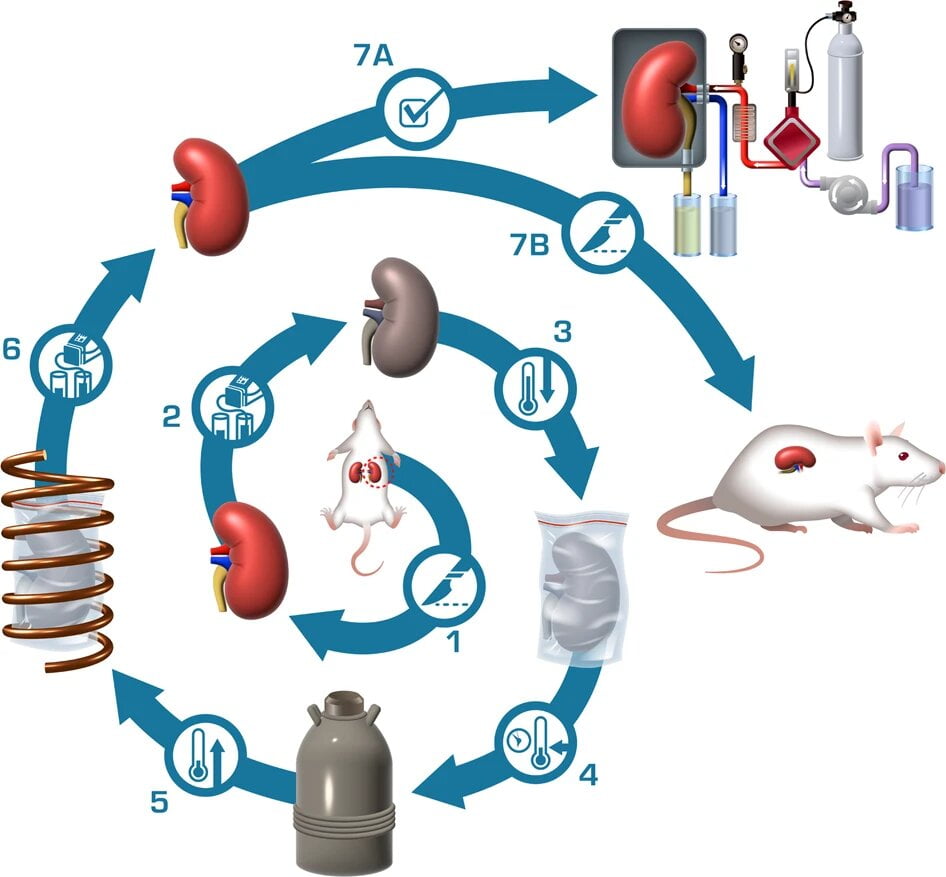For competitive swimmers, the quest for speed is an eternal pursuit. Every stroke, every kick, every ounce of determination ripples towards a singular goal: conquering the pool. But in this aquatic arena, not all strokes are created equal. Some slice through the water with the grace of a dolphin, while others churn and pound, exuding raw power. So, what swimming stroke is the fastest?
The answer, like the ever-shifting currents, is nuanced and depends on a confluence of factors: the swimmer’s physique, training style, and even the distance they conquer. This article delves into the depths of each competitive stroke, dissecting their technical nuances, uncovering their hidden strengths, and ultimately revealing the champions of speed in different swimming scenarios.
Buckle up, grab your goggles, and prepare to torpedo through the fascinating world of competitive swimming strokes!
Freestyle The Undisputed King of Speed
Freestyle, also known as the front crawl, is the undisputed king of the pool when it comes to raw speed. Its streamlined body position, windmill-like arm movements, and continuous flutter kick create minimal drag and maximize propulsion. This stroke’s efficiency lies in its rotational core engagement, allowing swimmers to harness the power of their entire torso with each stroke.

Unveiling Freestyle’s Secrets of Speed
- Rotational Powerhouse: Freestyle hinges on core engagement. As one arm extends forward, the opposite hip rotates, creating a powerful coil-and-release motion that translates into forward momentum.
- The High-Elbow Catch: A high elbow entry during the arm stroke minimizes drag and allows for a longer, more powerful pull through the water.
- Breathing Without Breaking Rhythm: Freestyle breathing involves turning the head to the side without disrupting the body’s streamlined position. This ensures a steady oxygen supply without sacrificing speed.
Freestyle’s Reigning Champions
- Sprint Kings and Queens: The 50m and 100m freestyle events witness the explosive power of freestyle specialists like Caeleb Dressel and Sarah Sjöström, who shatter records with their lightning-fast strokes.
- Distance Dominators: Freestyle’s efficiency also translates to longer distances. Olympians like Katie Ledecky and Florian Wellbrock have carved their names in swimming history with their mesmerizing freestyle prowess in events like the 400m and 800m freestyle.
Butterfly The Undulating Powerhouse
The butterfly stroke is a mesmerizing display of human-dolphin hybrid propulsion. Its symmetrical arm movements, reminiscent of a butterfly’s wings, and powerful underwater dolphin kick generate immense power. However, mastering this stroke’s intricate timing and coordination demands dedication and athletic prowess.
Butterfly’s Secrets of Speed
- Synchronized Symphony: The butterfly stroke requires perfect symmetry in arm and leg movements. The arms execute a simultaneous pull and recovery motion, while the dolphin kick undulates through the water in unison.
- Harnessing the Power Wave: The underwater dolphin kick is the butterfly’s secret weapon. By generating force through a wave-like motion of the entire body, swimmers propel themselves forward with exceptional power.
- Breathing for Bursts: Breathing in a butterfly requires a quick turn of the head just before the arms break the surface. This minimizes disruption to the stroke’s rhythm and ensures efficient oxygen intake.
Butterfly’s Reigning Champions
- Sprint Sensations: Michael Phelps and Sarah Sjöström have redefined butterfly dominance, their powerful strokes and technical mastery setting new world records in the 50m and 100m butterfly events.
- Medley Mavens: The butterfly stroke is also a crucial cog in the medley relay, where swimmers like Chase Kalisz and Katinka Hosszú showcase its versatility and explosive power in shorter distances.
Backstroke The Graceful Glider
Backstroke, often described as the ballet of swimming, exudes elegance and precision. Swimming on their backs, athletes rely on a smooth, windmill-like arm action and a continuous flutter kick to propel themselves forward. This stroke demands exceptional body control and spatial awareness, as swimmers navigate the pool without visual cues from the front.

Backstroke’s Secrets of Speed
- Streamlined Symmetry: Backstroke emphasizes a sleek body position with minimal drag. The head remains neutral, the hips high, and the core engaged to maintain a streamlined profile.
- The Windmill Unwinds: Backstroke’s arm action resembles a windmill, with alternating strokes creating a continuous propulsive force. The key lies in a high elbow catch and a powerful underwater pull to maximize each stroke’s efficiency.
- Kicking in Sync: The flutter kick provides constant propulsion in backstroke. By keeping the knees slightly bent and the ankles relaxed, swimmers generate a smooth, rhythmic kick that complements the arm strokes.
Backstroke’s Reigning Champions
- Distance Demons: Backstroke’s efficiency shines in longer distances. Legends like Aaron Peirsol and Missy Franklin have etched their names in history with their dominant performances in the 100m and 200m backstroke events.
- Medley Masters: Backstroke is a vital part of the medley, where swimmers like Ryan Lochte and Katinka Hosszú seamlessly transition between strokes, showcasing their versatility and endurance.
Breaststroke The Powerhouse of Propulsion
Breaststroke, often seen as the most “relaxed” stroke, packs a surprising punch when it comes to power. Its frog-like leg kick and wide arm pull generate significant propulsion, making it a formidable contender in the speed game, especially for shorter distances.
Unveiling Breaststroke’s Secrets of Speed
- The Frog-Kick Frenzy: Breaststroke’s signature kick involves a powerful outward sweep followed by a quick inward kick. This generates significant thrust, propelling the swimmer forward with surprising force.
- The Wide Arm Glide: Breaststroke’s arm pull starts with a wide stroke, maximizing surface area for water capture. This, combined with a strong inward pull and a powerful push outwards, creates a highly efficient propulsive motion.
- Streamlining for Surprises: While breaststroke may appear less streamlined than other strokes, proper body position with a high head and engaged core minimizes drag and optimizes efficiency.
Breaststroke’s Reigning Champions
- Sprint Specialists: Adam Peaty and Ruta Meilutytė have rewritten the record books in the 50m and 100m breaststroke, proving that this “slow” stroke can pack a serious punch at short distances.
- Medley Masters: Breaststroke is a crucial component of the medley relay, where swimmers like Yui Ohashi and Chase Kalisz showcase its versatility and ability to generate explosive power for short bursts.
Beyond the Strokes Unlocking Your Aquatic Potential
Choosing the “fastest” swimming stroke is not a black-and-white answer. While freestyle reigns supreme in most Olympic sprint events, the ideal stroke for each swimmer depends on a multitude of factors. Body type, training style, and even race distance all play a role in determining which stroke will unlock your aquatic potential.

Finding Your Speed Symphony
- Embrace Diversity: Don’t be afraid to experiment with all four strokes! Mastering each stroke’s technical nuances and developing a well-rounded skillset will make you a more versatile and adaptable swimmer.
- Listen to Your Body: Pay attention to what feels natural and efficient for your physique. Some swimmers naturally gravitate towards the power of breaststroke, while others find the rhythm of backstroke effortless.
- Seek Expert Guidance: A qualified coach can help you analyze your strengths and weaknesses, identify the stroke that best suits your goals, and refine your technique to maximize your speed and efficiency.
Remember, the quest for aquatic speed is a lifelong journey. By understanding the nuances of each stroke, honing your technique, and embracing your unique strengths, you can conquer the pool and carve your path to competitive glory.
Resources & References
- International Swimming Federation (FINA): https://www.worldaquatics.com/
- American Swimming Coaches Association (ASCA): https://swimmingcoach.org/
- The Science of Swimming: https://www.swimmingscience.net/
- Total Immersion: https://www.totalimmersion.net/about
Please note: This article is for informational purposes only and should not be considered a substitute for professional medical or coaching advice. Always consult with a qualified healthcare professional or swimming coach before starting any new exercise program.
FAQs About the Fastest Swimming Strokes
Which stroke is the absolute fastest?
Freestyle, also known as the front crawl, generally takes the crown for being the fastest swimming stroke. Its streamlined body position, windmill-like arm movements, and continuous flutter kick minimize drag and maximize propulsion. This efficiency makes freestyle the go-to for most Olympic sprint events.
Are there any other strokes that can compete with freestyle in terms of speed?
While freestyle dominates in short distances, the butterfly stroke can give it a run for its money. Its powerful underwater dolphin kick and synchronized arm movements generate immense power, making it a formidable contender in the 50m and 100m butterfly events.
What about backstroke and breaststroke? Are they slower than freestyle and butterfly?
Backstroke and breaststroke, while beautiful and technically demanding strokes, generally fall behind freestyle and butterfly in terms of pure speed. However, they still have their strengths: backstroke’s elegance and efficiency shine in longer distances, while breaststroke’s powerful frog-kick makes it a surprising powerhouse for short bursts.
Does body type play a role in which stroke is fastest for me?
Absolutely! Swimmers with naturally long limbs may excel in freestyle or butterfly, while those with strong torsos might find breaststroke a natural fit. Ultimately, the “fastest” stroke is the one that feels most comfortable and efficient for your physique.
How can I improve my speed in any swimming stroke?
The technique is key! Refining your stroke mechanics with the help of a qualified coach can make a world of difference in your speed and efficiency. Additionally, building strength and endurance through targeted training will equip you for those crucial extra seconds in the pool.
Is there anything else I can do to become a faster swimmer?
Absolutely! Streamlining your equipment, staying hydrated, and fueling your body with proper nutrition can all contribute to your swimming performance. Remember, consistency is key – the more you practice, the more you’ll refine your technique and unlock your aquatic potential.


